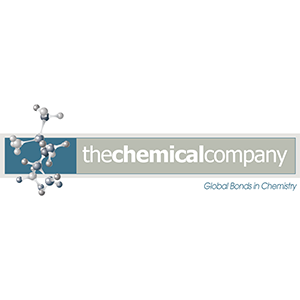QUOTE OF THE DAY
Patriotism is supporting your country all the time, and your government when it deserves it.
—Mark Twain
U.S. chemical production was flat in April; remains up 4.4 percent over one year ago according to the American Chemistry Council (ACC). The U.S. Chemical Production Regional Index (U.S. CPRI) was flat in April, as measured on a three-month moving average (3MMA). This followed an upwardly revised flat growth rate in March and a 0.2% gain in February.
Also measured on a 3MMA basis, chemical production by segment was mixed. There were gains in the output of coatings, chlor-alkali, pesticides, adhesives, consumer products, other specialties, industrial gases, synthetic rubber, plastic resins, and organic chemicals. These gains were offset, however, by declines in the production of fertilizers, acids, phosphates, sulfates, synthetic fibers, and pharmaceuticals.
Politics play too big a role in the Environmental Protection Agency’s proposed regulations, say a group of Senate Republicans. But the EPA Science Advisory Board Reform Act would “assist [the agency] in crafting and issuing appropriate environmental regulations,” said Sen. Mike Rounds, R-S.D., chairman of an Environment and Public Works Committee subpanel, during a hearing on the bill. The White House has issued a veto threat for the bill, which would overhaul the EPA’s scientific advisers.
Borealis and Agrifos Partners are in the early stages of forming a joint venture to build a world-scale ammonia production facility on the Texas Gulf Coast. Borealis would have rights to 40% of the ammonia from the site to help expand its global nitrogen business.
National Association of Chemical Distributors (NACD) sent a letter and supplemental information to the Occupational Safety and Health Administration asking for an immediate, short-term administrative stay through Dec. 1 regarding the agency’s enforcement of its Hazard Communication Standard rulemaking for companies’ chemical products previously labeled and stored in their existing inventory. The current deadline for complying is June 1.
In 2015, there is a tremendous amount of interest in India on the part of the global plastics industry. India’s industry is projecting that the country will double its per person use of plastics by 2020, as a growing consumer class increasingly wants the smartphones, computers, cars and better food packaging that are more common in other places.
DuPont is emphasizing new products to maintain growth in China. Roger Kant, the company’s marketing director for packaging & industrial polymers in the Asia Pacific highlighted several new products and technologies for the China market that included Elvaloy phthalate-free plasticizers for PVC and meat packaging using a combination of DuPont Surlyn resin, with EVOH barrier and a tough layer of either nylon or polyester.
The rise of the U.S. plastics industry and increase in chemical manufacturing will add 462,000 jobs across the nation in the next 10 years, according to data from the American Chemistry Council. More than $130 billion chemical-related investments have been proposed in the U.S. since 2010. “Companies are restoring jobs to the United States as new manufacturing is increasingly being located here at home,” said Steve Russell, vice president of plastics for ACC.
The Environmental Protection Agency’s Integrated Risk Information System needs “more tangible signs of progress,” the American Chemistry Council says. A recent progress report to Congress showed work on several of the recommendations from the National Research Council. However, IRIS must improve its criteria for reviewing evidence, its responsiveness to stakeholder input and its problem formulation and scoping process, ACC said.
The Federal Energy Regulatory Commission has asked the Environmental Protection Agency to include a safety valve to protect grid reliability in its Clean Power Plan. With a safety valve, states could ask the EPA for temporary exemption from compliance. FERC offered to help the EPA to assess such requests if the EPA allows the provision.
PTT Global Chemical and Marubeni plan to choose a third partner for a proposed $5 billion ethane cracker project in Ohio. The project, planned for Belmont County, could bring hundreds of long-term jobs to the area.
Rep. John Shimkus, R-Ill., is expected to officially introduce the Toxic Substances Control Modernization Act (TSCA. The full House Energy and Commerce Committee will likely review the bill in early June, and the bill may reach the House floor by the end of the month. “Our goal is to lock it down with the agreement that we have, unless there’s big buy-in on both sides” to make changes, Shimkus said.
At the 2015 Central Region Meeting on June 8-10 at the Eaglewood Resort in Itasca, Illinois, ICC Compliance Center’s Emily Walter will review the three major deadlines for compliance with the new Hazcom 2012 requirements. A discussion of what each deadline includes and who needs to comply, and an examination of OSHA’s recently published enforcement guidance and how it impacts the deadlines will be included. Understanding the deadlines and enforcement guidance will help companies stay compliant every step of the way.
The U.S. Centers for Disease Control and Prevention and other groups are urging people to stop urinating in pools as it depletes the chlorine and produces an irritant that can sting people’s eyes. Meanwhile, the smell commonly thought to come from chlorine is actually from “chemicals that form when chlorine mixes with pee, sweat and dirt from swimmers’ bodies,” said Chris Wiant, Chair of the Water Quality and Health Council. Therefore, pool users should shower before getting in and refrain from urinating in the pool, experts advise.

Oil & Gas Related
Shale oil companies are edging closer to their big debts becoming a bigger problem. Moody’s Investor Service believes 7.4 percent of U.S. oil producers over the next year could default on the risky debt that fueled the nation’s shale boom if crude stays cheap.
Private land and mineral rights owners say they are seeing sluggish revenues from royalty payments as shale producers default on debts and go bankrupt amid a slump in oil prices.
“Thanks to hydraulic fracturing and horizontal drilling, the U.S. is experiencing a renaissance in domestic oil and natural gas production. The benefits for U.S. consumers — as well as manufacturers, the travel and tourism industry and frankly our entire economy — are hard to overstate,” John Felmy, chief economist with the American Petroleum Institute, said in a conference call with reporters.
The Environmental Protection Agency’s proposal to lower the ground-level ozone limit would “throw thousands—if not millions—of jobs into jeopardy,” writes Michael James Barton, energy adviser at ARTIS Research. The American Chemistry Council has determined that 211 shale-related projects worth $135 billion could be threatened by the standards.
The U.S. is about to change the global LNG market forever. When the first tanker carrying liquefied natural gas from shale fields leaves the Sabine Pass terminal in Louisiana in December, it will turn consumers into traders with more bargaining power. That will transform a market dominated by long-term contracts into one where spot trading gains prominence, similar to crude oil.
Significant U.S. exports will likely boost gas prices, currently at about $3 a million British thermal units, Energy Aspects Ltd. said in a report for UniCredit SpA on Tuesday. U.S. gas may converge toward European levels, now at about $7 a million Btu, the analysts said.
LNG trade will exceed $120 billion this year, overtaking iron ore as the second most valuable commodity after oil, Goldman Sachs Group Inc. said in a March report. LNG is gas cooled to minus 160 degrees Celsius (minus 256 degrees Fahrenheit) so it occupies 600 times less space.
Ten Senate Democrats implored President Obama Thursday to nominate a new head for the Pipeline and Hazardous Material Safety Administration (PHMSA), which has not had a leader in seven months. The letter came two days after an oil pipeline on California’s coast leaked an estimated 105,000 gallons of oil into the the Pacific Ocean, which washed onto the beaches of Santa Barbara County.
Since 2010, the benchmark price for natural gas futures contracts has mostly held below $5 per million British thermal units (MMBtu). Frequently, the price has dipped as low as $2 per MMBtu, as drillers from Pennsylvania to Texas have raised output from previously uneconomical gas deposits buried in shale and other hard-to-drill rock.
Demand for gas is also growing from a surprising source: Fleets of trucks switching from costly diesel fuel to cheaper compressed or liquefied natural gas to save on fuel costs.
Sens. Joe Manchin, D-W.Va., Lisa Murkowski, R-Alaska, Heidi Heitkamp, D-N.D., and Bob Corker, R-Tenn., on Tuesday unveiled a bill that would lift the ban on U.S. crude oil exports. The legislation would provide “triggers to stop exports if gas prices increase or if our economy is adversely affected,” said Manchin. He added that allowing oil exports would benefit U.S. national security interests.
Royal Dutch Shell’s deal with BG Group that we’ve been watching since last month may not likely signal a wave of major mergers and acquisitions in the oil and natural gas industry, contrary to several observers’ predictions, writes Reuters reporter Clyde Russell. He notes that other companies could follow, but at “a smaller scale,” as they seek to complement their businesses with additional assets. “It will take sustained, lower commodity prices to knock valuations to the level where mega-mergers may make sense again,” Russell wrote.
Cleanup continues for the California oil spill, and experts are now saying that it could have been way worse than it was. The pipeline was carrying 1,300 barrels of oil an hour, which is below its capacity of 2,000 barrels.
The Middle East’s OPEC oil cartel just ramped up its war on the US shale gas industry as new data from Saudi Arabia shows that oil exports in March reached their highest level in 12 years, with production at record levels.
Morgan Stanley says the U.S. shale boom is over and the industry is getting more efficient — because it has to. After a conference in Houston with the oil and gas industry, MS’s research team writes that the industry is weathering the downturn in oil prices by increasing efficiency. This included the willingness by operators to look at new solutions, technologies, and approaches to project development that perhaps would not have gained traction without the downcycle.
“It will take many years until we see oil prices anywhere near the $100 mark,” Petroliam Nasional Bhd. President and Chief Executive Officer Wan Zulkiflee Wan Ariffin said at a conference in Kuala Lumpur. “We’ve underestimated the resilience of U.S. shale production. ‘We’re still grappling our way to climb out of this big drop.”
Tokyo Gas Co Ltd, Japan’s biggest gas utility, is looking to invest in more U.S. shale gas production as a hedge to liquefied natural gas (LNG) imports from the United States to start next year, a company executive said. The company has inked contracts to buy 1.9 million tonnes per year (tpy) of LNG from U.S. producers and aims to invest in an equal volume in the upstream sector, said Shigeru Muraki, a board member and executive adviser at Tokyo Gas.
Pumping a barrel of oil out of the Eagle Ford Shale could get $10 to $15 cheaper by summer 2016 as service companies cut costs and operators tune up their wells, analysts say. The oil slump hasn’t stopped producers in the South Texas play from getting better at targeting oil-rich rock in lateral sections of their horizontal wells, speeding up their pressure pumping systems and adopting better technologies for bringing wells into production. Those efforts could help lift wells’ initial production rates by an average 33 percent in the Eagle Ford, even as service companies cut prices for drilling tools, proppant and rigs by an average 16 percent this year, Wood Mackenzie analysts said.
Adapting the technology that powered the shale oil boom in Texas to the deserts of Saudi Arabia and elsewhere could produce 141 billion barrels of crude, research firm IHS said. Horizontal drilling and hydraulic fracturing, alongside other technological breakthroughs in recent years, could pump that much oil out of 170 older, largely unproductive fields around the world, from the Middle East to Latin America to Russia.

The Economy
According to Bloomberg, the weekly consumer sentiment index dropped to 42.4 in the period ended May 17, the lowest since mid-December, from 43.5 as fewer consumers said now was a good time to spend. Such angst, particularly among lower-income households, probably has its roots in steadily climbing prices at the gas pump and limited wage gains.
Retail sales rose less than expected in March after declining for three consecutive months. Since the U.S. began collecting data in 1967, only twice has it seen three-month stretches of waning retail sales in non-recessionary times.
Businesses have remained upbeat all year, particularly in the U.S. This seems incongruous with slower growth and suggests that the recent slowdown will prove temporary. Businesses remain steadfast in their optimism over sales, investment, and hiring. Credit is also freely flowing. Pricing is sturdy, despite heightened deflation concerns in much of the world, and sales are healthy.
Legislation aimed at granting “fast track” powers to President Barack Obama as he seeks to cement the Pacific trade deal cleared a key procedural hurdle in the Senate this morning, with Republicans and a handful of Democrats joining to break a filibuster. A full vote is expected by Saturday, setting the stage for a contentious House debate on the legislation.
The U.S. will hold new talks with Cuba today, with the two countries believed to be on the brink of opening embassies and normalizing diplomatic relations. “We’re closer than we have been in the past, and I think my counterparts are coming up here with a desire to get this done,” a top State Department official said.
U.S. economy is edging closer to recession. Government information released in May indicates that growth actually contracted quarter over quarter. Barclays Capital and JPMorgan (JPM) both lowered U.S. Q1 GDP estimates to negative 1.1% after disappointing factory order data revisions last Thursday. Now, it even looks as if the second quarter is imperiled. Retail sales for April were disappointing. Again, economists had expected that a decline in gasoline prices would boost consumption, which hasn’t happened.
Wall Street Journal—Consumer prices rose for the third consecutive month in April, the latest sign of firming inflation.
Federal Reserve Chairwoman Janet Yellen said the central bank is on track to raise interest rates this year but will likely proceed cautiously.
U.S. home building surged in April to the highest level since before the recession officially began, a sign of thaw in the housing market during the critical spring selling season.
A weaker euro helped boost exports of goods from the Eurozone to the rest of the world in March, pushing the currency area’s trade surplus higher and aiding its economic recovery.
China’s factories showed little sign of a rebound in May, in the latest indication that any near-term upturn in the world’s second-largest economy will be driven more by stimulus than a broad-based recovery.
American households across the wealth spectrum increasingly face sharp swings in monthly income and spending, a finding that underscores the unpredictability that has become a hallmark of the U.S. labor market since the recession.
NEW DELHI, India — When Narendra Modi became prime minister a year ago on a promise to revive India’s once-sparkling economy, inflation was running at 9% and economic growth had slowed to less than 5% — half the pace of two years earlier. Today, inflation is down to 5%, and the International Monetary Fund forecasts India’s economy will grow 7.5% this year, outpacing China’s growth for the first time since 1999.
Fed Chair Janet Yellen: “If the economy continues to improve as I expect, I think it will be appropriate at some point this year to take the initial step to raise the federal funds rate target and begin the process of normalizing monetary policy,” she said. “To support taking this step, though, I will need to see continued improvement in labor market conditions, and I will need to be reasonably confident that inflation will move back to 2 percent over the medium term.”






